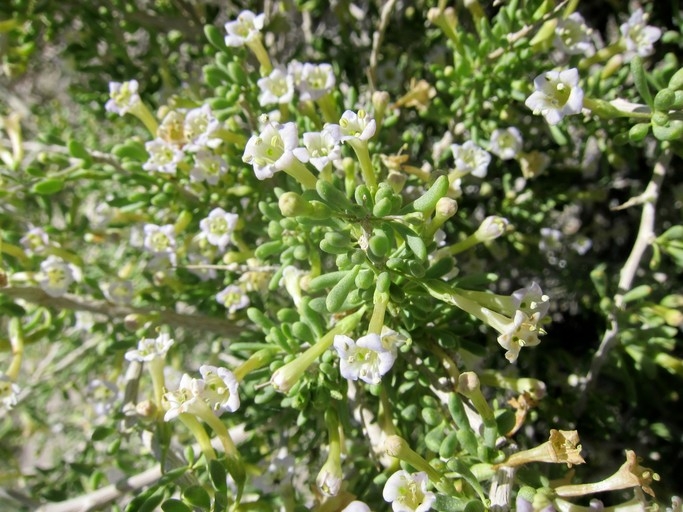Anderson’s Boxthorn
(Lycium andersonii)
Anderson’s Boxthorn (Lycium andersonii)
/
/

Mary Winter
Public Domain











































































Estimated Native Range
Summary
Anderson’s Boxthorn is valued for its drought tolerance and ability to thrive in harsh desert environments, making it suitable for xeriscaping and naturalistic plantings in arid regions. It is also used for erosion control due to its extensive root system. In cultivation, it requires full sun, minimal water once established, and well-draining soil. While it is not commonly used in ornamental horticulture, its unique appearance and low maintenance requirements can make it an interesting addition to rock gardens or desert landscapes. Care should be taken when handling or planting due to its spiny branches. There are no significant disease problems, but overwatering can lead to root rot.CC BY-SA 4.0
Plant Description
- Plant Type: Shrub
- Height: 3-9 feet
- Width: 1-2 feet
- Growth Rate: Moderate, Rapid
- Flower Color: Purple, White
- Flowering Season: Spring
- Leaf Retention: Deciduous
Growth Requirements
- Sun: Full Sun
- Water: Low
- Drainage: Medium, Fast
Common Uses
Bee Garden, Bird Garden, Butterfly Garden, Deer Resistant, Edible*Disclaimer: Easyscape's listed plant edibility is for informational use. Always verify the safety and proper identification of any plant before consumption., Erosion Control, Hummingbird Garden, Low Maintenance, Salt Tolerant
Natural Habitat
native to arid habitats such as desert washes, slopes, and mesas in the Southwestern United States, California, and Northwestern Mexico
Other Names
Common Names: Water-Jacket, Redberry Desert-Thorn, Anderson Thornbush, Anderson’s Desert Thorn, Anderson Boxthorn, Anderson Lycium, Anderson Wolfberry, Squawberry, Anderson Wolfberry, Anderson’s Wolfberry
Scientific Names: , Lycium andersonii, Lycium andersonii var. andersonii, Lycium andersonii subsp. wrightii, Lycium berlandieri var. andersonii,
GBIF Accepted Name: Lycium andersonii A.Gray